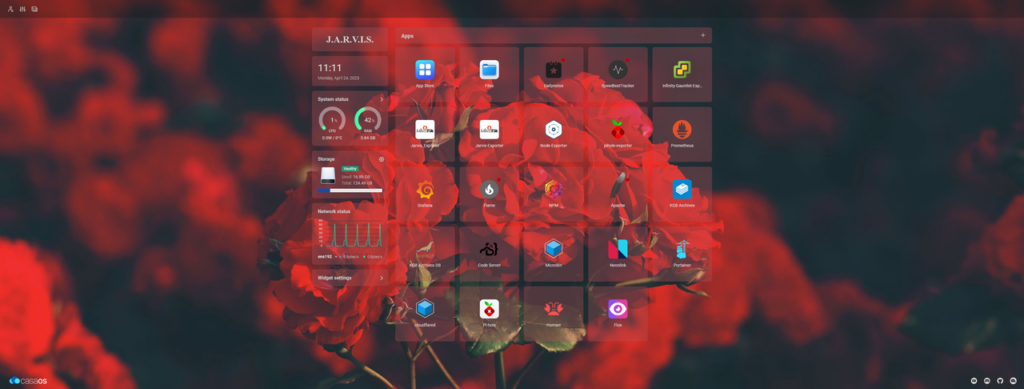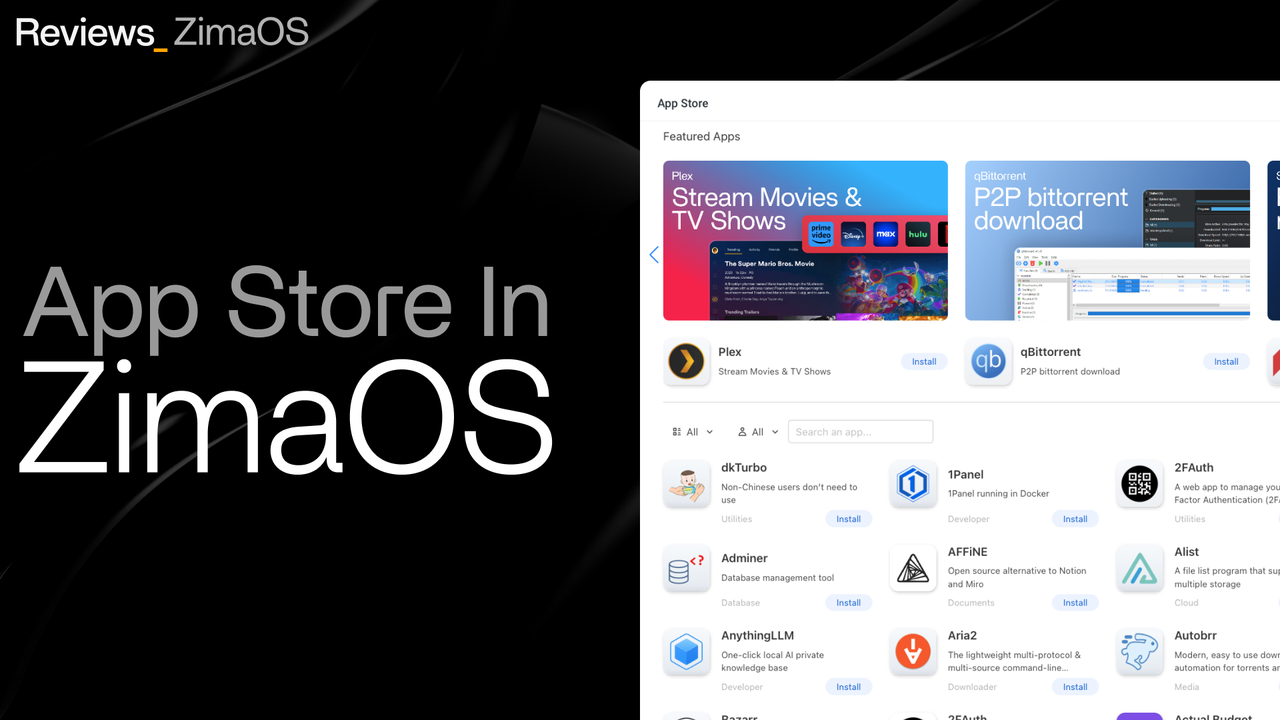Latest News
CasaOS Successful Case Story-Simplifies Docker for a Seamless Experience
John Guan - Jun 06, 2023
We have redeveloped the entire app store and application management in the CasaOS v0.4.4 Alpha version, adopted a new app store based on Git repositories, and brought native Docker feature support based on the application format based on docker-compose, which made it easier for developers and users.
One of our CasaOS community members, Ali.Sa is here to share his experience and insights on using CasaOS v0.4.4 Alpha, the latest version, along with his favorite apps.
Ali.Sa: CasaOS Simplifies Docker for a Seamless Experience
Ali.Sa has adopted CasaOS as an indispensable tool across his home lab, servers, and virtual machines. The power of CasaOS lies in its sleek, user-friendly GUI that effortlessly simplifies Docker for all user levels. From a built-in file manager and system statistics to a Docker management system, CasaOS monitors container resources effectively, making it easier to handle any lurking zombie containers.

When configuring a system with Docker containerization, Ali.Sa prioritizes the installation and setup of CasaOS. Three apps he typically deploys, irrespective of the environment, include Node Exporterfor extracting OS metrics, Prometheusfor data gathering, and Grafanafor data visualization. These three containers, with the aid of CasaOS, can be up and running in under five minutes, thereby setting up a customizable monitoring system complete with alerts.
In Ali.Sa’s home lab, he applies a combination of Pi-hole exporter, ESXi exporter, and Mikrotik exporter. These tools collectively facilitate the extraction and monitoring of metrics, allowing them to surpass their native capabilities. The combined use of these apps is highly recommended for users interested in in-depth metric tracking and monitoring.
BookStackserves as a noteworthy tool for Ali.Sa. It acts as his personal wiki and knowledge management system. With the use of CasaOS V0.4.4 Alpha, the installation of BookStack and similar containers becomes an easy task. The application supports Docker Compose, even for multi-container stacks, simplifying the process for users and enhancing their overall experience.
For astronomy enthusiasts, Stellariumcomes highly recommended. As part of Ali.Sa’s suite of applications, Stellarium allows him to identify celestial bodies, such as stars and planets, by simply pointing his device at the sky. This information is subsequently recorded in a container named ‘daily notes, creating a fascinating log of the celestial bodies observed on specific days.
Microbinis an app that Ali.Sa finds it invaluable for note-taking. It offers a simple GUI that enables users to take notes, access them from anywhere, and delete them with ease. The deployment and installation of Microbin are streamlined by CasaOS, making it an ideal tool for those in need of an efficient and flexible note-taking solution.
For users who prefer self-hosted alternatives to browser bookmarks, Ali.Sa suggests Neonlink. It serves as a comprehensive solution for managing and organizing bookmarks, ensuring easy access to saved content.
Film lovers would appreciate Ali.Sa’s recommendation of Flox. As a movie and series watchlist with a built-in rating system, it lets users share their thoughts with friends after watching a film. The functionality of Flox makes it an appealing app for those who enjoy sharing and discussing their cinematic experiences.
Lastly, Nginx Proxy Manager(NPM) proves to be a versatile tool in Ali.Sa’s arsenal. With a clean GUI, NPM manages domains, and SSL certificates, and even issues free certificates. NPM is used in almost all of Ali.Sa’s CasaOS setups to access apps and containers locally and remotely via his domain address, eliminating the need to remember individual IPs and ports. With CasaOS, users can add NPM along with other containers on a single Docker network, enhancing the overall security and accessibility of their setups.
Ali.Sa said: Thanks to CasaOS and its developers, users like him are able to simplify the process of building, deploying, and managing tools that typically require Linux expertise. This makes CasaOS a highly recommended platform for both new and experienced users alike.
Overcoming Challenges with CasaOS
Ali.Sa’s journey with CasaOS was not without challenges. One such issue involved creating a Docker network for attaching his containers. He addressed this by using Portainer to create a custom Docker network and then used CasaOS to attach his containers to this network or install a new container with the custom Docker network as its default. It is important to note that using Portainer, later on, to make changes to the app settings through CasaOS (if it was originally used for app/container installation) would result in reverting the network settings back to the Docker bridge.
Another issue was the mismatch between the names CasaOS used for its dashboard and the actual container names. This was particularly problematic when two containers on the same network needed to communicate privately. Ali.Sa resolved this issue by using Portainer to verify the actual container names or execute commands via the command-line interface (CLI).
Conclusion
Despite some hurdles, tools like Portainer and the CLI enabled Ali.Sa to navigate challenges and make the most of CasaOS. His experience underlines the significance of CasaOS in simplifying the process of building, deploying, and managing apps that would typically require Linux expertise. Ali.Sa’s journey offers valuable insights and inspiration for both seasoned developers and beginners exploring CasaOS.


